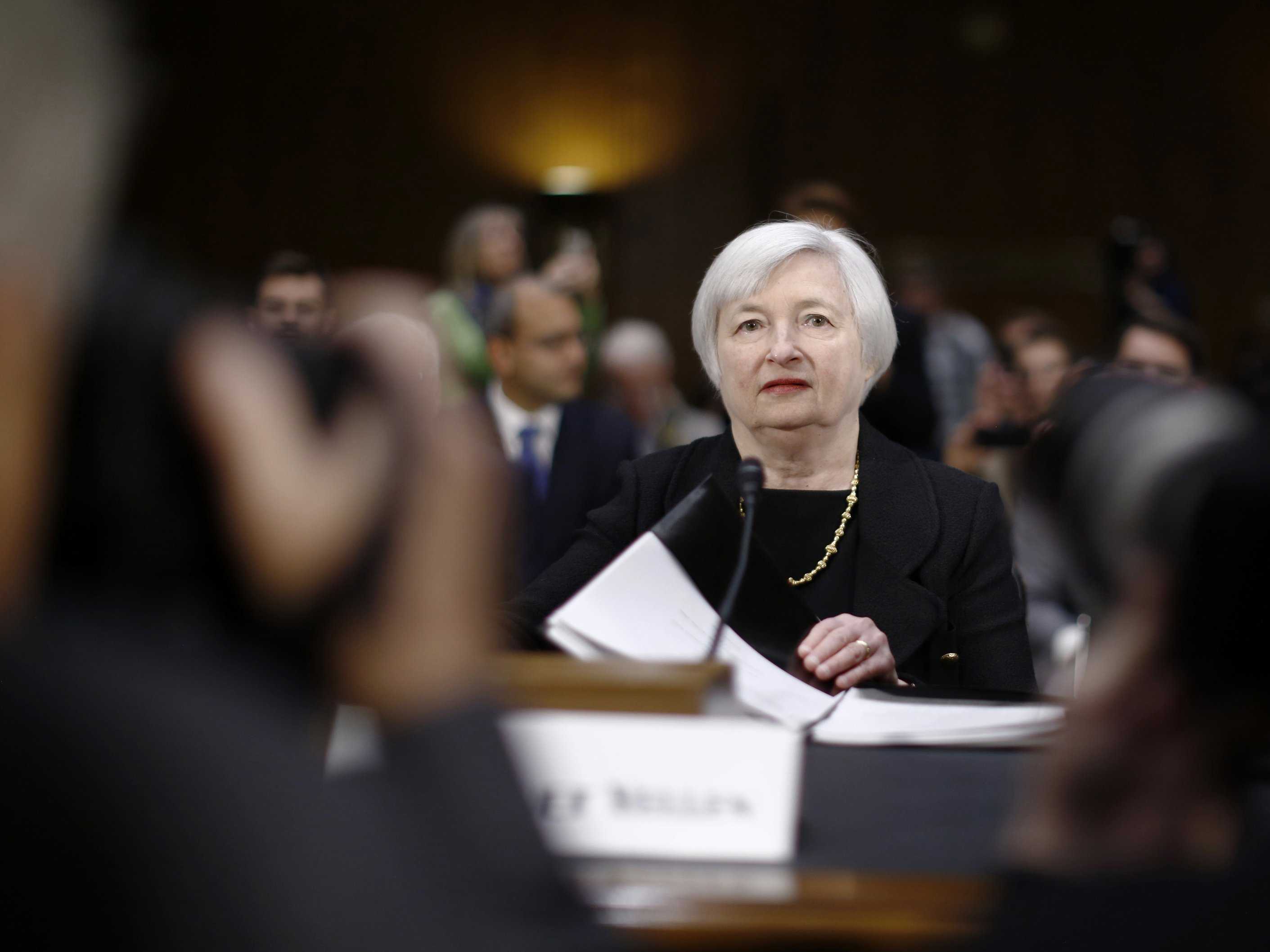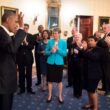(Federal Reserve Chairwoman Janet Yellen | Source: Reuters)
| Theory 1, the conventional liberal view, blames pessimistic investors. Theory 2 blames the extreme inequality that leaves banks no longer willing or able to lend. |
QE has indeed supplied the biggest banks with cheap money for profitable trading in the international financial markets, enabling them to recover from the 2008 crisis—and continue paying big bonuses. It has in fact kept interest rates near zero for big banks and corporations. By purchasing bonds from the “government-sponsored enterprises,” Fannie Mae and Freddie Mac, which buy high-quality mortgages, QE has kept mortgage rates down and hence values up for prime real estate.
That’s nice if you qualify, or if you’re a big bank holding real estate collateral. By keeping bond yields very low, QE has also sent investors piling into the stock market looking for better returns, creating a stock market boom—nice if you own or issue stocks. So QE has done quite well for big bank executives and other members of the 1 percent.
But what about stimulating the economy by encouraging investment with low interest money? That hasn’t happened, but why? Does no one want to borrow, or do banks not want to lend? My favorite financial columnist, Yves Smith, has laid out both theories.
“Making money cheaper is not going to make anyone want to take risk if they think the fundamental outlook is poor. Except for finance-intensive firms (which for the most part is limited to financial services industry incumbents), the cost of money is usually not the driver in business decisions, market potential, the absolute level of commitment required, competitor dynamics and so on are what drive the decision; funding cost might be a brake. So the idea that making financing cheaper in and of itself is going to spur business activity is dubious, and it has been borne out in this crisis, where banks complain that the reason they are not lending is lack of demand from qualified borrowers. Surveys of small businesses, for instance, show that most have been pessimistic for quite some time.”
“I’ve remarked in passing elsewhere that one of the reasons we don’t see more small business lending despite the Fed’s fond hopes that pushing on a string will work is that the overwhelming majority of banks no longer do small business lending. (The bigger issue is lack of loan demand, but we’ll put that aside for now). Thirty years ago, every large bank had a year or two-long credit officer training program. They’d then cut their teeth working on large corporate loans and some would eventually wind up doing middle market lending or managing branches, which meant they’d approve small business loans. That type of officer has almost entirely died out. Except at small banks, branches sell products and loans are scored against templates set at high levels in the bank. Character-based lending and the use of knowledge of the local market have gone out the window.”
Theory 1, the conventional liberal view, blames pessimistic investors. Theory 2 blames the extreme inequality that leaves banks no longer willing or able to lend to any but the largest, safest borrowers. Obviously, it’s possible to straddle both theories, as does Smith, but which should carry more weight?
Theory 1 hinges on a key phrase: “lack of demand from qualified borrowers.” But who decides which borrowers are “qualified”? The banks! So at the very least, banks now turn away many eager would-be small business borrowers, people who would once have qualified. These include my contractor son-in-law, rejected for a no-brainer refinancing of a completed and occupied luxury home.
Theory 2 says that in the real world, there’s tons of demand from small borrowers, business and personal. Their willingness to pay 24 percent on credit cards or much higher pawn-shop and check-cashing rates suggests they expect very high returns on their small investments. Abhijit Banerjee and Esther Duflo have documented these high returns in Poor Economics, based on their work in 18 developing countries. In these countries microcredit—small loan—programs have proved that poor people can borrow, invest, and repay loans responsibly.
What policies might we derive from Theories 1 and 2? Theory 1—pessimistic investors—says QE can work if we just stir up investor enthusiasm by heavy government spending, almost no matter on what or how financed. Theory 2 says QE can’t work, because it worsens inequality; instead of QE, we should break up the big banks. Since that’s not happening, Theory 2 also says increase spending—spending to provide support for the high-return investments of small business and low income people. What are the possible policies?
For not-that-small business, the Federal Small Business Administration guarantees loans (average loan in 2012, $562,000), which unfortunately still leaves it depending on banks’ evaluations of borrowers. Policies to provide jobs directly include rebuilding city infrastructure—but not bridges to nowhere. Policies to provide cash benefits to people include minimum wage increases, unemployment insurance, increases in earned income tax credits, and cuts in payroll taxes. Other policies include better public transportation, free job training and education, and free health care. Expanded health care from the Affordable Care Act can bring huge returns on investment. Imagine a poor woman whose bad teeth leave her in constant pain and too embarrassed to smile. With those teeth replaced by new dentures, she can at last apply for a decent sales or service job!
QE has only further entrenched the too-big-to-lend banks.
We can’t effectively stimulate the economy unless we address the core problem: inequality.
Polly Cleveland is Adjunct Professor of Environmental Economics at Columbia University School of International and Public Affairs.







0 Comments